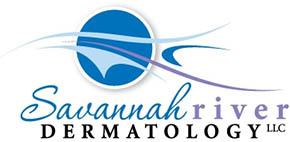Back to school is an exciting time for kids and parents alike! However, once the excitement of the first few weeks is over, you may find your child coming home with the sniffles, a scraped knee from the playground, or even head lice. The American Academy of Dermatology estimates that about 6 to 12 million children between 3 and 12 years of age get head lice each year. So, what should you know about head lice? We’ve compiled a list!
What are head lice?
Head lice are tiny bugs that need human blood to survive. They are barely visible on a fine-tooth comb and crawl from head-to-head.
How do you get head lice?
Head lice are transmitted from physical contact. A common misconception is that having head lice means you have dirty hair. However, head lice don’t discriminate! They like all humans, although are more commonly found on girls rather than boys potentially due to girls having more natural head-to-head contact than boys. They can spread from close physical contact such as sitting next to another person with head lice, or sharing everyday objects infested with lice such as hats, scarves, coats, hair accessories, brushes, combs, and towels. Resting your head on a bed, pillow, couch, chair, or rug that someone with head lice used is another way to get head lice.
What symptoms should you look for?
- Itchy Scalp
- Scratching
- Red, irritated skin on the head and back of the neck
- Small lice appearing in the hair, may first appear like small “sesame seeds”
- Lice eggs or “nits” that appear as white or clear dots the size of a pin head, these will cling to hair
- Other physical ailments such as Swollen Lymph Nodes or Pink Eye, a common eye infection
Most often if your child has contracted head lice at school, your school nurse or physician will have administered a head lice check. However, if you suspect your child or other family member has head lice and hasn’t been diagnosed you can perform a test using a bright light and fine-tooth comb and combing out the individual’s hair from scalp to tip checking the comb for nits or head lice.
How do you treat head lice?
Head lice can be easily treated at home with products found at your local drugstore. You can purchase a head lice treatment kit that contains a shampoo and comb. Carefully read and follow the directions.
- Apply the product to the head of a fully dressed person, and rinse the product out with a spray hose or running water from a sink. These products are not meant for use while taking a shower or bath. You want to limit the amount of skin that the product touches and only use the amount directed.
- Use the lice comb that comes with the shampoo to comb out the hair. It will have teeth that are closer together to remove the lice or nits.
- Look at the hair 8 to 12 hours after treatment. If the lice seem as active as they were before the treatment, the medicine may not be working. Do not treat again. Talk with your dermatologist. A different lice medicine may be necessary.
- Wait two days to wash your hair. This lets the medicated product continue to work. Continue to comb through the hair with the lice comb once a day. Doing this for two to three weeks helps to ensure that you get rid of the lice.
- About a week after the first treatment, retreat as recommended on the package. Retreatment is generally recommended with all products you can buy without a prescription. No approved treatment for head lice can kill all the eggs during the first treatment.
- Continue to comb through the hair with the lice comb once a day. Do this for two weeks, checking for lice and nits.
If your child or someone else in your family still has head lice after a few weeks, it means that the treatments did not work or the person got lice again. Make an appointment to see a dermatologist for help getting rid of the head lice. With proper treatment, it is possible to get rid of head lice. Your dermatologist may recommend a product that you can buy without a prescription or a prescription medicine.Savannah River Dermatology is located at 575 Furys Ferry Road in Augusta, GA. Call us to make an appointment at 706-691-7079.








